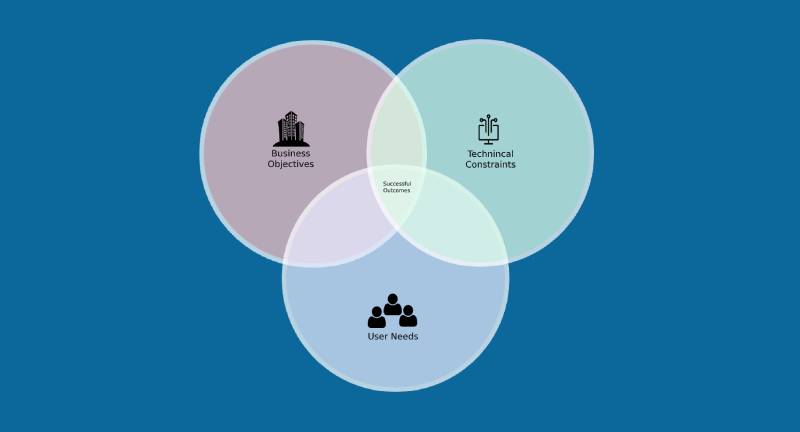Table of Contents
What is Design Thinking?
Design thinking is the mindset that intends to change the situation of users through their experiences. You can practice the Design Thinking, if you are interested in solving problems for people. Design thinking is classified more than any product or service. Enterprise Design thinking is simply for large, diverse teams to solve complex problems.
Design Thinking Process:
Design thinking Process needs you to examine a person’s experience to focus on their requirements. Your clients don’t essentially bother about the inner workings of a process: they seek a quick pick-me-up, a comforting chat, or something at that need of the hour.
In simple words, design thinking is a problem-solving approach that endeavours to improve the lived experiences of oneself.
What is “enterprise” in Enterprise Design Thinking?
Enterprise Design Thinking is a solution to Design thinking for huge, dispersed teams attempting to solve the hardest of the problems. Enterprise Design Thinking is like a framework that your team can use to analyze your clients and users. It is related to cooperate across skillsets, and work on significant problems.
When large companies try to choose conventional design thinking patterns in general, they soon started to break down. They don’t last up to scale and complexity that numerous of us face. A one size meets all linear process seems not to serve, when your aims change every quarter and you are attempting to stay agile to that change.
Concept of design thinking: For instance, we are presuming you are not staying in the same place as everyone who has a stake in the projects you are working on. You might have everyday video conference calls with teammates around the world. You might encounter restrictions and constraints while attempting for new ideas or imagining creatively. Also, you may even think, you can’t get anything achieved be’coz no one is always on the same page. Enterprise Design Thinking is solution to these problems.
Enterprise Design Thinking is a tailor-made method for large, dispersed, teams to assist them promptly deliver human-centered results to the business
Principles of Enterprise Design Thinking:
Manage your day-to-day work by considering your user in mind, co-operating with a diverse team, and continuously attempting to improve your solutions.
- A Focus on User Outcomes
- Diversed Empowered Teams
- Restless Reinvention

A Focus on User Outcomes
Drive business by assisting users accomplish their goals.

Diversed Empowered Teams
Stay imperative by handling everything as a prototype.

Restless Reinvention
Move quicker by working collectively and containing diversity.
The Principle guides you to concentrate on User Requirements, work with diverse teams, experiment with new approaches and ideas.
The Loop of Enterprise Design Thinking
Understand the present and envision the future in a constant cycle of observing, reflecting, and making.

Observe
Immerse yourself in the real environment with design research.

Reflect
Get together and see within to synchronize your progress, integrate what you’ve learned, and share your great moments with all.

Make
Provide concrete form to obscure ideas.
The Key of Enterprise Design Thinking
Scalable practices to help enterprise teams get and stay aligned.

Hills
Hills are statements of intent written
as user enablements. They follow a
format of Who, What, and Wow.

Playbacks
Playbacks are story-based
presentations that share ideas,
insights, and updates to a user
experience.

Sponser Users
Sponsor Users are external clients,
future clients, potential clients, or end users that
represent your target user. Sponsor
Users regularly contribute domain
expertise to your team.
More about Enterprise Design Thinking:
1. Enterprise Design Thinking is a way for us to collaborate better as a team.
2. Enterprise Design Thinking is a way for us to focus more on the people who use .
3. Enterprise Design Thinking is a way for us to explore new ideas quickly and at a low cost.
4. Enterprise Design Thinking can deliver new products or services to the market twice as fast.
5. Companies who leverage Enterprise Design Thinking see a 300% return on investment.
6. Teams who use Enterprise Design Thinking are 75% more efficient.
Identify your users and their problems
1. Complexity and ambiguity
Enterprise teams, like yours, deal with complex ecosystems that take years to learn and master. They offer countless rabbit holes, worm holes, plot holes, pot holes, and any other kind of ambiguous situations you can think of. Finding enough clarity to decide on the best thing to do within this intricate web can sometimes seem impossible.
But, it doesn’t have to be so hard. Finding clarity can be as simple as focusing on the most important thing. In design thinking, the most important thing is people. In Enterprise Design Thinking, we call this a focus on user outcomes (an Enterprise Design Thinking Principle that represents putting your users at the center of your work and solving for their needs).
2. A focus on user outcomes
When you focus your team and your work around your users and their needs, you’re able to more easily decide what’s important. This makes your offerings more essential to the people who use them. If all you did was ask:
Who are our users?
What is their current experience?
How could it be improved?
over and over again, you would get closer and closer to understanding your users and creating an ideal future for them. This allows you to put a more valuable offering into your client’s hands and into the market.
3. Business problems to human-centered problems
Business problems, like those you are asked to solve day to day, are often focused on something nonhuman, like the bottom line or brand recognition. In order to start focusing on your users, you have to identify the user problems that underlie the business problem.

4. Ask why
The 5 Whys activity digs deeper into a problem, or uncovers the intent behind an idea.
5. Current situation to improved future
We expect that from enterprise problems. The key is to identify the users who are impacted the most.
Next, you need to work to understand these users’ current experience. Design thinking at its core is the process of understanding the situation, recognizing where it can be improved, and then creating a better future for the people involved. This is the concept of moving from as-is, to to-be.
6. Working With Sponsor Users
Sponsor Users are more than just focus groups. See how a team built a relationship with their users and truly co-created for meaningful results